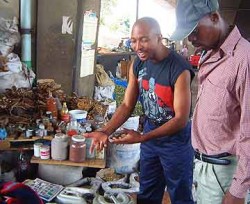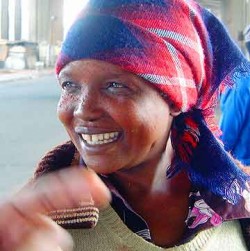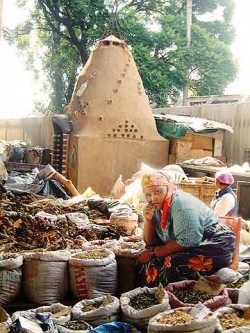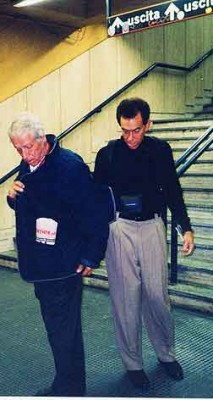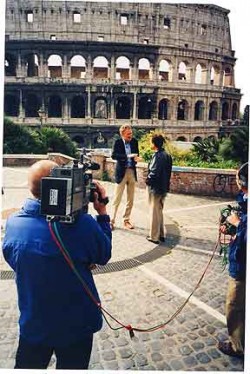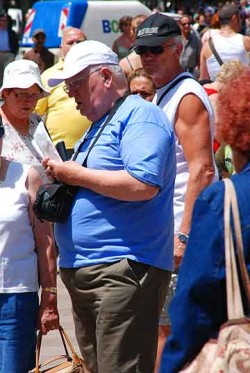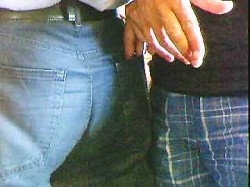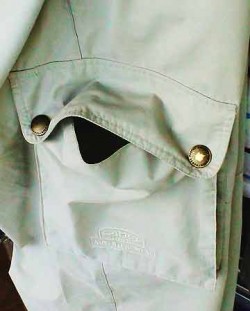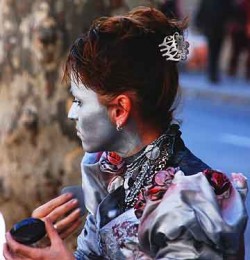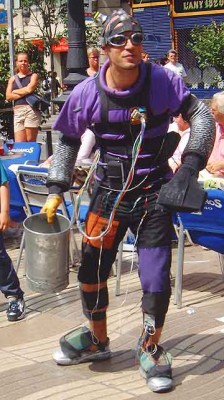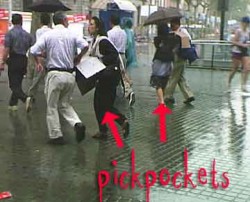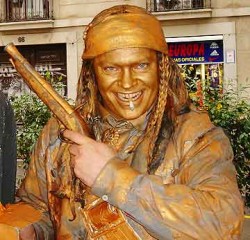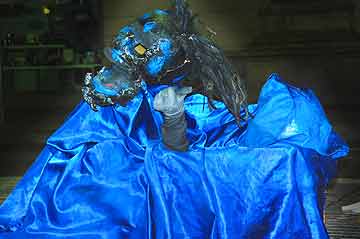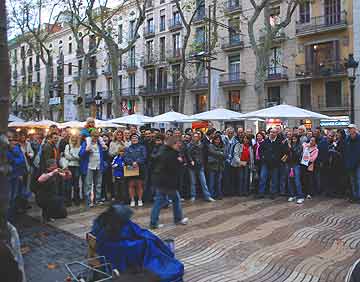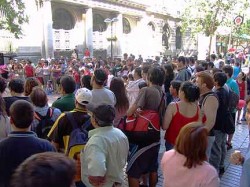
Thieves are thick on Lisbon’s two main tourist trams, 15 and 28. Within five minutes of arriving at a tram stop for #28, we’d pegged a pair of pickpockets. One carried a flat messenger bag and a newspaper, the other carried a jacket in the sweltering heat.
They stood well away from the gathering crowd waiting for #28. I was among the crowd; Bob watched from across the street, then down the block.
When the tram eventually lumbered along its tracks toward the stop, it was as if a director had called “action!” The waiting passengers tried to anticipate its exact stopping point; the two thieves moved in; Bob got into line; I kept to Bob’s right, camera aimed at his back pocket; one pickpocket threw his jacket over his left arm and went for Bob’s (prop) wallet; the other pickpocket got behind me, trying for my purse.
Slowly, we all mounted the tram stairs. I knew the thieves hadn’t succeeded, because they boarded also. If they’d gotten anything they wouldn’t have; but they still thought they had a chance.
Bob and I were both using new video cameras, and we both missed the shot. I had the better opportunity. Perfectly positioned, I saw everything. But I didn’t press the record button hard enough (though I thought I did). I missed the money shot.
The thieves moved to the back of the tram, where another pair, a man and a woman, joined them. It looked like they planned to work together. We were pretty sure they would try to block a departing passenger and pickpocket him on the stairs. Bob wanted to be that passenger, but I wanted to wait and see how their game played out.
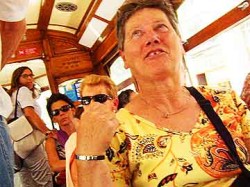
Meanwhile, a woman looked at me with a big, friendly smile. “His wallet,” she said, patting her hip, “it’s dangerous…that way.” Laughing, she pointed her thumb behind her toward the back of the tram. To Bob she said “In her pocket is better.”
As the tram trundled on, I wondered why one of the pickpockets moved on my purse.

It’s made of thick, rough leather, has a narrow opening high in my armpit, and a deep shape. It would be impossible to get into—unless the man had a razor blade. Even with a blade it would be a challenge, but the cutpurse wouldn’t necessarily realize it. Not particularly stylish, the purse is perfect for thiefhunting. I found it in Beijing.
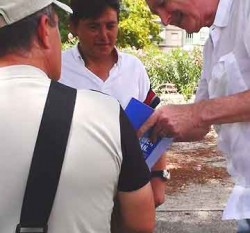
Too soon, the tram came to the end of its line and no one departed in front of the thieves. As the team of four dispersed, Bob accosted the original pair. We learned that they’re Portuguese, as was the third man, while his female partner was Bosnian. One of the thieves got busy on his mobile phone and wandered off—we guessed he was speaking with the third man.

We kept up a conversation with the second, who was willing to talk. He demonstrated his technique, nipping the wallet between his first and second fingertips.
Bob and I waited for the next tram to go back. So did the foursome, smoking, separated, cautious, on the grassy area at the end of the line. We got on; of course they didn’t.
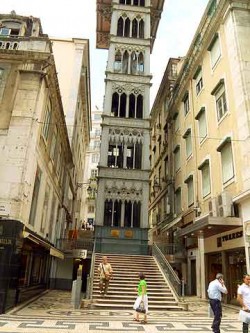
We learned that pickpockets are also active on the stairs around the old elevator tower, despite the presence of security guards. We didn’t spend much time there. Worse, gang activity has increased dramatically over the past year, with immigrants arriving from the favellas of Brazil. Car-jackings are commonplace, even in the city center. Graffiti was everywhere.
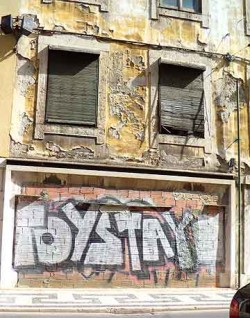
The whole city is crumbling. Peeling plaster and missing tiles made for some interesting textures on the walls. Unfortunately, Lisbon can’t pull off the elegant flaky-paint look the way Venice does. Lisbon just looks terribly dilapidated, its glory days over, deteriorating as we watch. Its structures are still grand, but they’re dressed like homeless derelicts, with the same empty-eyed glower, all dignity and self-respect burned off by neglect.
What I have always loved about Lisbon (and other Portuguese cities) are the sidewalks; and these, I’m happy to report, are still immaculately maintained. Black and white mosaics of smooth marble cubes, they are still neat, level, and polished to a slippery shine. The designs are different wherever you walk, some simple geometric shapes, some extravagant patterns, even signs of the zodiac. I’ll post about the making of these mosaics later.

Next day, same place. Waiting for tram 28. We’re melting in the heat and up shuffles this guy, with a thick, dirty sweatshirt tied around his waist, and a messenger bag. Not too obvious, is he? When the tram neared he dragged himself into position, and stared blankly up at the shouting driver. The driver was not shouting at him; he was saying something about a broken door, that the tram was going out of service. No one got on. Our man trundled away, like a tram off its tracks, with no discernible destination.









